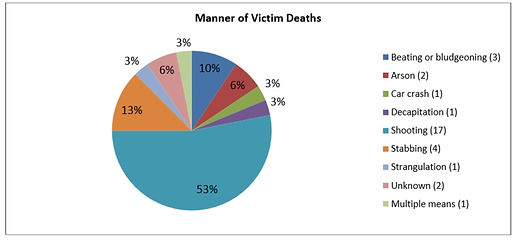top of page


How big is the problem?
Intimate Partner Violence is common. It affects millions of people in the United States each year. Data from CDC’s National Intimate Partner and Sexual Violence Survey (NISVS) indicate:
-
About 1 in 4 women and nearly 1 in 10 men have experienced contact sexual violence, physical violence, and/or stalking by an intimate partner during their lifetime and reported some form of IPV-related impact.
-
Over 43 million women and 38 million men experienced psychological aggression by an intimate partner in their lifetime.
-
IPV starts early and continues throughout the lifespan. When IPV starts in adolescence, it is called teen dating violence (TDV). TDV affects millions of US teens each year.
-
About 11 million women and 5 million men who reported experiencing contact sexual violence, physical violence, or stalking by an intimate partner in their lifetime said that they first experienced these forms of violence before the age of 18.
Source: Smith, S. G., Zhang, X., Basile, K.C., Merrick, M.T., Wang, J., Kresnow, M., Chen, J. (2018). The National Intimate Partner and Sexual Violence Survey (NISVS): 2015 Data Brief—Updated Release. Atlanta, GA: National Center for Injury Prevention and Control, Centers for Disease Control and Prevention.
10.1.20 - 9.30.20
DATA Dashboards of Intimate Partner Violence in Douglas County, Oregon
STATISTICS
Every year, 3-4 million women in the U.S. are abused and 1,500-1,600 are killed by their abusers. (dangerassessment.org) The challenge for those who encounter women experiencing abuse is to identify those with the highest level of danger. Understanding the statistics of intimate partner violence is one part in identifiying those needing safety from violence.
Unreported Victimizations
-
Across the U.S. there were an average of nearly 600,000 unreported nonfatal domestic violence victimizations each year between 2006 and 2015.
-
In about a third (32%) of unreported victimizations, victims cited the personal nature of the incident as a reason for not reporting it.
-
About a fifth of victimizations were not reported because the victim wanted to protect the offender (21%), felt the crime was minor or unimportant (20%), or feared reprisal from the offender or others (19%).
-
Domestic violence victimizations involving serious violence (31%) were more likely to go unreported due to fear of reprisal than victimizations involving simple assault (13%).
-
An estimated 61% of female victimizations involving a serious injury were not reported due to fear of reprisal. Regardless of the severity of the incident, female victimizations (24%) were four times as likely as male victimizations (6%) to go unreported due to fear of reprisal.
Source: Bureau of Justice Statistics, National Crime Victimization Survey, 2006 - 2015.
Domestic Violence Incidents across Oregon, 2017
A total of 37 people—victims and perpetrators—lost their lives in 2017.
Fifteen out of thirty-six Oregon counties had at least one fatal domestic-violence incident, including Douglas County.
Source: Fatal Domestic Violence in Oregon: Demographics Related to Victims, Perpetrators, and Incidents, 2017 Report


bottom of page
